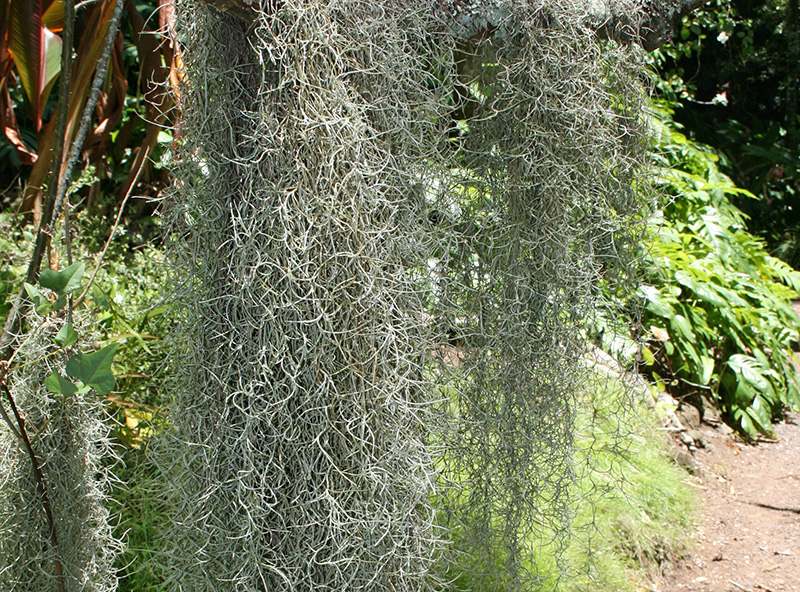More on the “Southern Gothic” Plant We Can All Name But Know Little About.
Bear with me for just a moment, and try to envision the Deep South without Spanish moss. (How did you do?) Everywhere you look, it’s adorning our majestic live oaks, caught up in the breezes, and lending an enchanted air to every avenue. But what is it? Where does it come from? How did it get here? And, perhaps most importantly, is it really home to the dreaded chigger?

Feuding Colonialists
Spanish moss got its current name when this perfectly innocent bromeliad got caught up in a long-standing rivalry between two major European powers vying for dominance in the New World. When French explorers asked their Native American guides about it, they were given the name Itla-okla, meaning “tree hair.” The temptation apparently too much to resist, the French started calling it “barbe espagnol,” likening it to the long, scraggly beards of the Spanish conquistadors. The Spaniards tried to get in on the joke, and referred to it as “cabello francés” (French hair), but it seems the nickname didn’t stick. More than 500 years later, it’s probably safe to say that it was the French who got the last laugh. Eventually making its way to similarly humid climes around the world, it traveled to Hawaii, where it is often called “Pele’s hair” (after the Hawaiian goddess), French Polynesia, where it is known as “grandpa’s beard,” and Australia.
Dust in the Wind
An epiphyte (as opposed to a parasite), Spanish moss doesn’t take nourishment from trees, instead feeding on whatever happens to be floating by—dust, fog, bird goo, dead tree cells and the bits of moisture and nutrients that collect on its tiny scales. It is most often found on southern live oaks and bald cypress but also lives atop Sweetgum, crepe-myrtles, pines and other varieties of oaks. Its leaves and stems grow pendant-style, and can form hanging structures up to twenty feet long!
Fleeting Rainbow
Spanish moss’ small gray scales hold excess water until the plant is ready to absorb it, allowing it to weather drier periods. This also means that drier Spanish moss is a grayish color, while the plumper, dewier version is distinctly greener. You can collect on that bet now—it really does change color!
Speaking of scales…
The possibility of coming face to face with chiggers is enough to deter most people from messing with the moss. But some say that chiggers only move in after it has fallen out of the tree. Whether or not that’s true, Spanish moss has long provided shelter and shade for all manner of jitter-inducing creatures, including but not limited to spiders, bats and snakes (though it’s also popular with birds and frogs).
All name-calling aside, there is something about this plant. Travel anywhere in the Lowcountry to get a feel for the role it plays in creating the mood of a place. Just don’t mess with it. Or do! But approach with caution…
Article by Dani Ray



